Logitech started in 1981 as a joint American-Swiss outfit, and headquartered in Switzerland. They produced computer mice years before they were commonly used on every home and work desktop.
They first entered the gaming peripheral market in 1998 with their WingMan joystick. This was followed with numerous ...
Products are shown in chronological order.
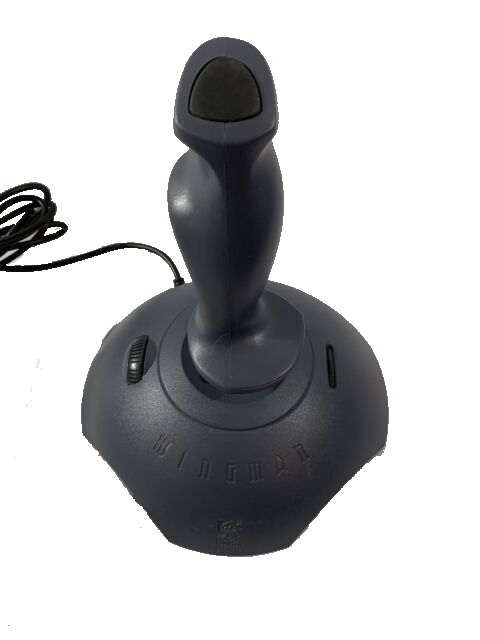 WingMan WingMan
Launched: 1996
Interface: 15-pin game port
Protocol: Standard analogue
Number of Axis:
Number of Buttons:
The original WingMan arrived in 1996.
More Images
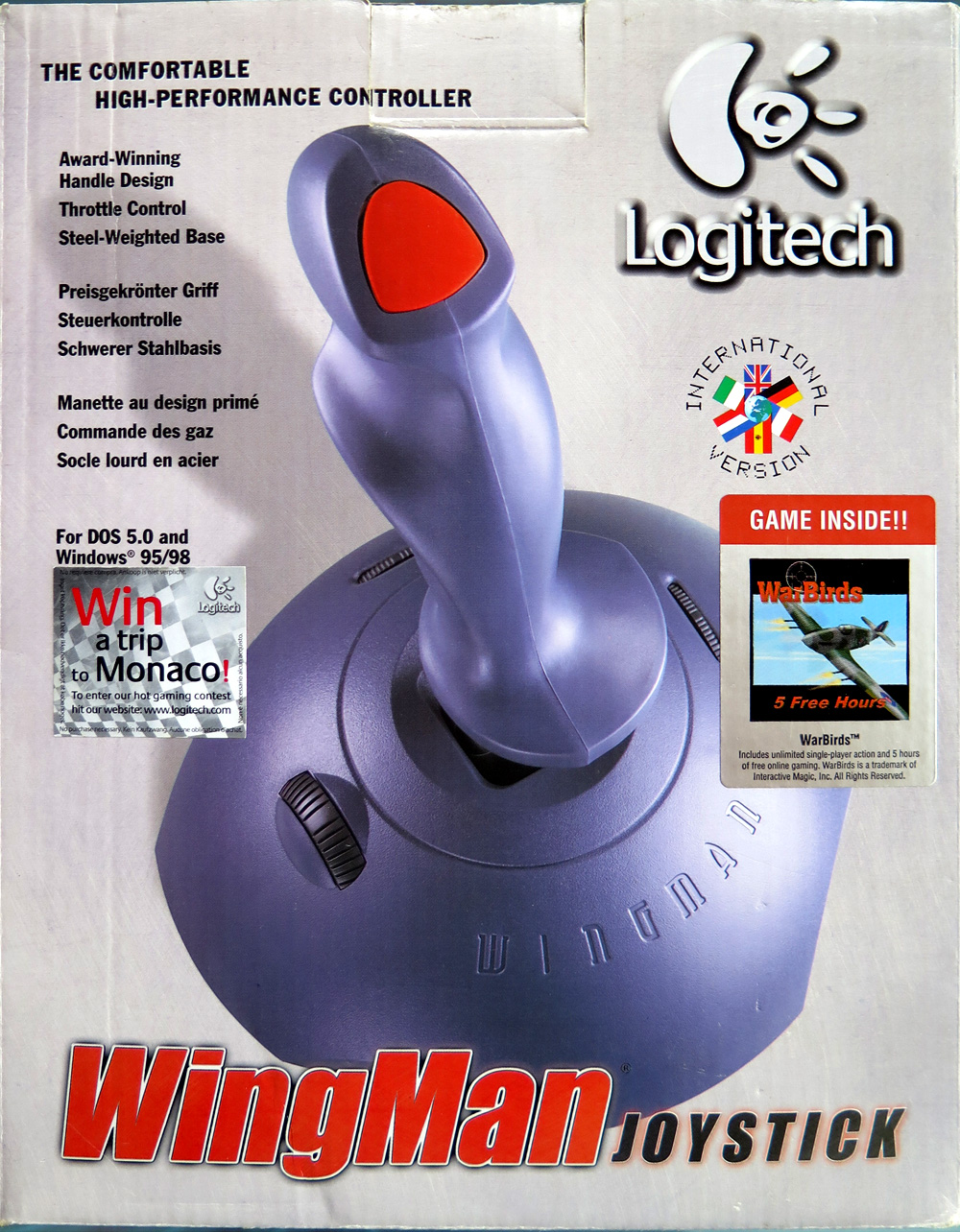 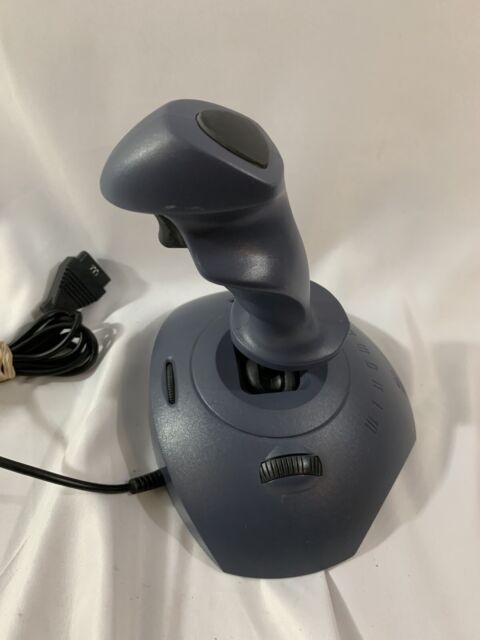
|
WingMan Extreme
Launched: 1996
Interface: 15-pin game port
Protocol: Standard analogue
Number of Axis:
Number of Buttons:
More Images
|
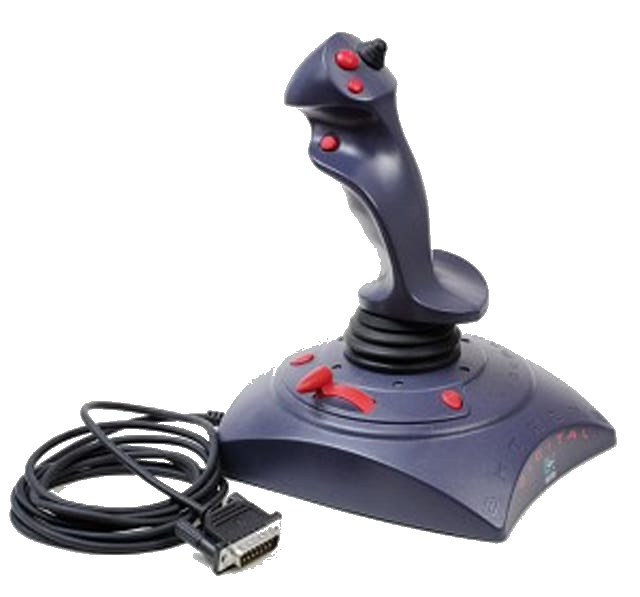 WingMan Extreme Digital WingMan Extreme Digital
Launched: 1997
Interface: 15-pin game port
Protocol: Logitech ADI
Number of Axis:
Number of Buttons: 6
The Logitech WingMan Extreme Digital picked up where the Extreme left off, this time shifting from pure analogue to digital interface for more responsive communication.
"When the WingMan Extreme first hit the scene a few years ago, it was considered by many game fans to be the perfect joystick. A nicely sculpted grip and a balanced feel made the stick suitable for action games and flight simulations alike. So how does Logitech improve on such a product? By making it digital.
Much of the digital-over-analog debate may sound like hype, but the fact is that digital joysticks are typically much more responsive and accurate than their analog counterparts. Also, you can program most digital sticks to emulate
keyboard input without having to connect them to the keyboard port (as you must with the Gravis Firebird 2).
But all of this technical mumbo jumbo aside, how does the joystick feel? The WingMan Extreme Digital is one of the most comfortable sticks we've used (provided that you're right-handed). The WingMan has a hat switch and six rubber-coated buttons. The buttons are great, because the rubber coating keeps your sweat-soaked fingers from sliding off in the heat of battle.
Installation is quick and painless, and the included software makes the stick very easy to program. What we like best about the WingMan, however,
is the tension in its handgrip. Though this amount of tension may prove too high for action fans, we found it added a feeling of realism to flight games.
All in all, we were very impressed
with the WingMan. Logitech took a good stick and made it even better. This joystick is all about balance: balance in its features, balance in its feel, and perhaps best of all, a nice big balance left over in your bank account."
SM, PC Magazine, November 1997
More Images
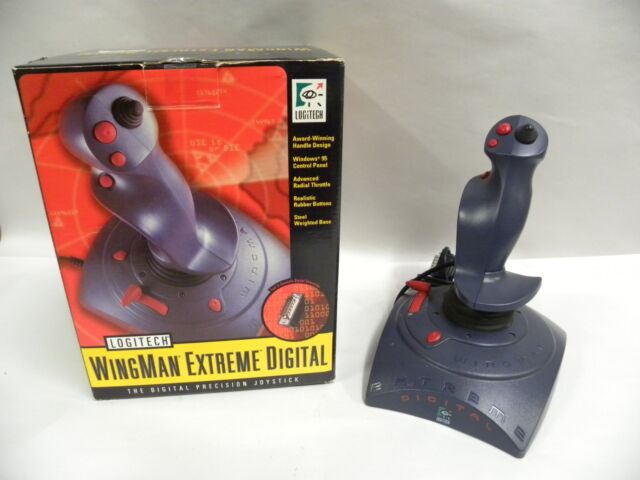 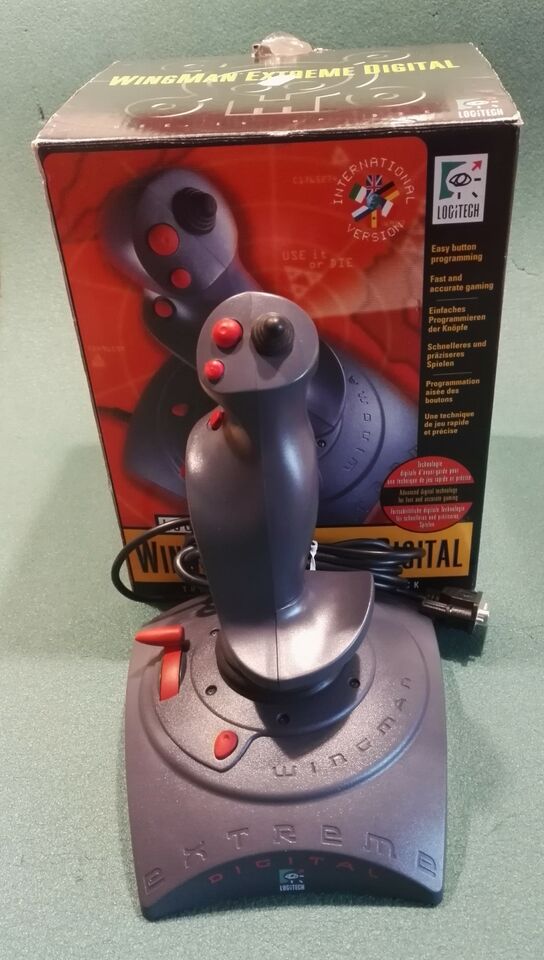
|
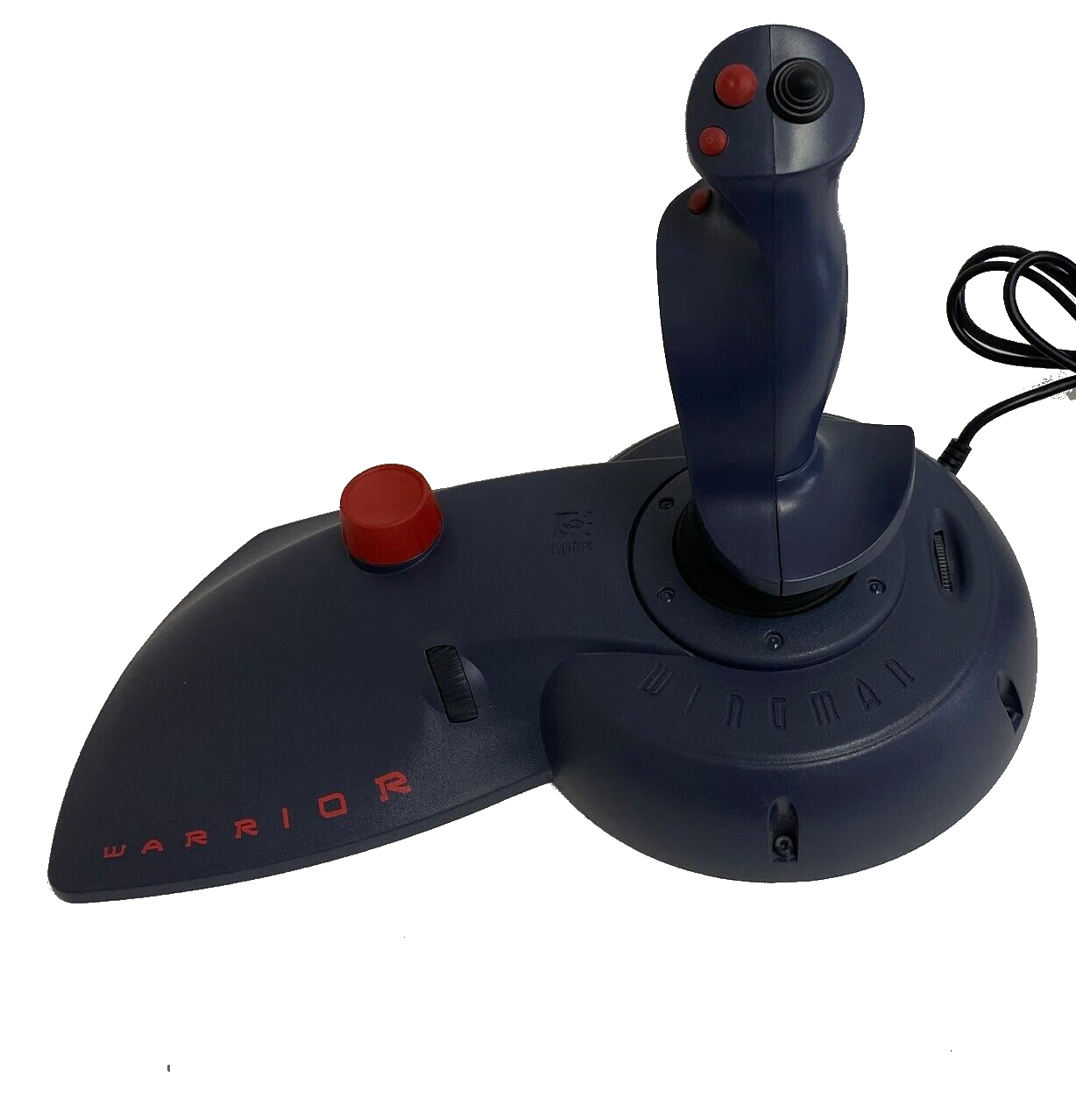 WingMan Warrior WingMan Warrior
Launched: 1997
Interface: 15-pin game port
Digital Protocol: Logitech SWIFT
Number of Axis:
Number of Buttons: 4
The WingMan Warrior was unique on its arrival as it incorporated both a joystick and left-handed area which had a throttle and a red "SpinControl".
The Warrior used its own serial protocol called SWIFT to send and receive digital data packets over the analogue 15-pin game port (I assume Logitech had not come up with their "ADI" protocol that would be used on later devices at the time the Warrior was being designed).
More Images
|
WingMan Attack
Launched: 1998?
Interface: 15-pin game port
Protocol: Standard analogue
Number of Axis: 2
Number of Buttons: 4
Prices:
The original WingMan Attack joystick arrived in the late 1990s. It was a 2-axis analog joystick with an analog throttle and four digital buttons: a trigger, a primary thumb button on the top of the joystick, and two secondaries. The joystick is black and the base is gray. It connects to a computer with a DA-15 plug.
More Images
|
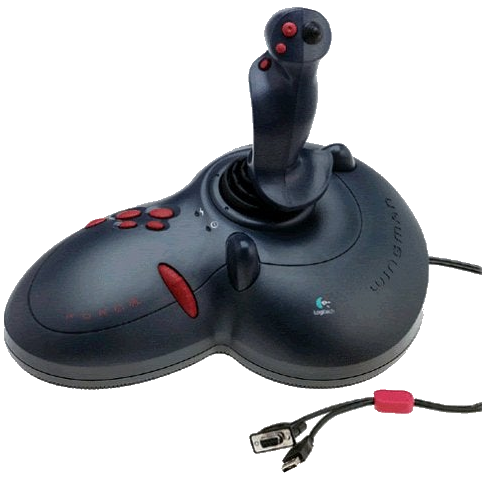 WingMan Force WingMan Force
Launched: 1998
Interface: Serial and USB
Protocol: I-Force
Number of Axis: 3
Number of Buttons: 9
" Ever since Logitech entered the joystick market with its WingMan line, he awards and accolades have poured in. The company is unlikely to stop with the Logitech WingMan Force - truly the next generation of joysticks.
The setup of the WingMan is very similar to that of the Microsoft SideWinder Force Feedback Pro, except that the former uses a serial port instead of a game port. You can also plug it into a USB port. The software is similar as well offering a Microsoft Windows utility that enables you to program the joystick for your favorite games. In addition, the WingMan works with the same games as the SideWinder - those that use DirectX or the I-Force API.
The classic sculpted grip that appears in earlier WingMan models is back, along with the nine programmable buttons, an eight-way hat switch, and a throttle wheel. Though larger than the SideWinder, this product has a solid and sleek construction that lets you rest your left hand
comfortably on its base for easy manipulation of the extra buttons.
The one component that makes this joystick different from the CH Products Force FX and the SideWinder is a unique cable drive system, which can provide as much as 1 pound of force and gives the unit a measurably quieter and smoother motion than its FF siblings. The feedback is also a tad more precise.
Our only quibble is that the recommended system is a Pentium MMX/66, which makes this stick a bit more demanding than the SideWinder."
PC Magazine, October 1998
More Images
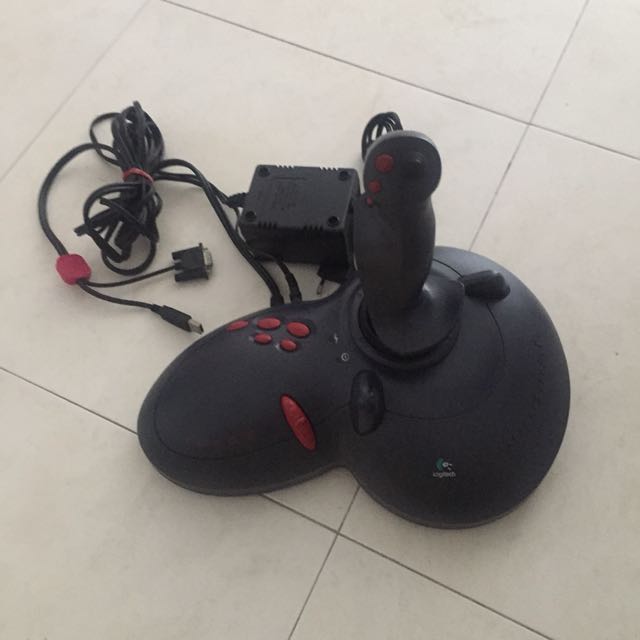
|
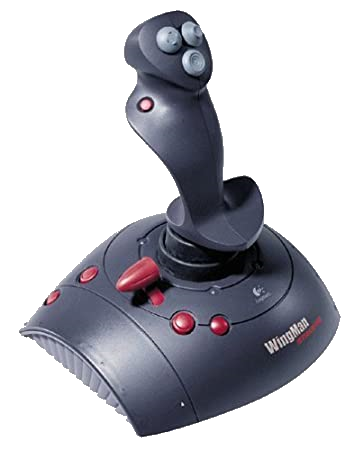 WingMan Extreme Digital 3D WingMan Extreme Digital 3D
Launched: 2000
Interface: 15-pin game port and USB
Protocol: Logitech ADI
Number of Axis: 3
Number of Buttons: 6
The Logitech WingMan Extreme Digital 3D was a premium version of the WingMan Attack - it used the same plastic mold as the Attack, but has a 3-axis joystick and adds several buttons. The primary thumb button is an 8-way hat, a second set of secondary thumb buttons sits on the top, and two buttons are added to the base. The entire thing is black. It connects with a DA-15 plug, but came with a DA-15-to-USB adapter.
More Images
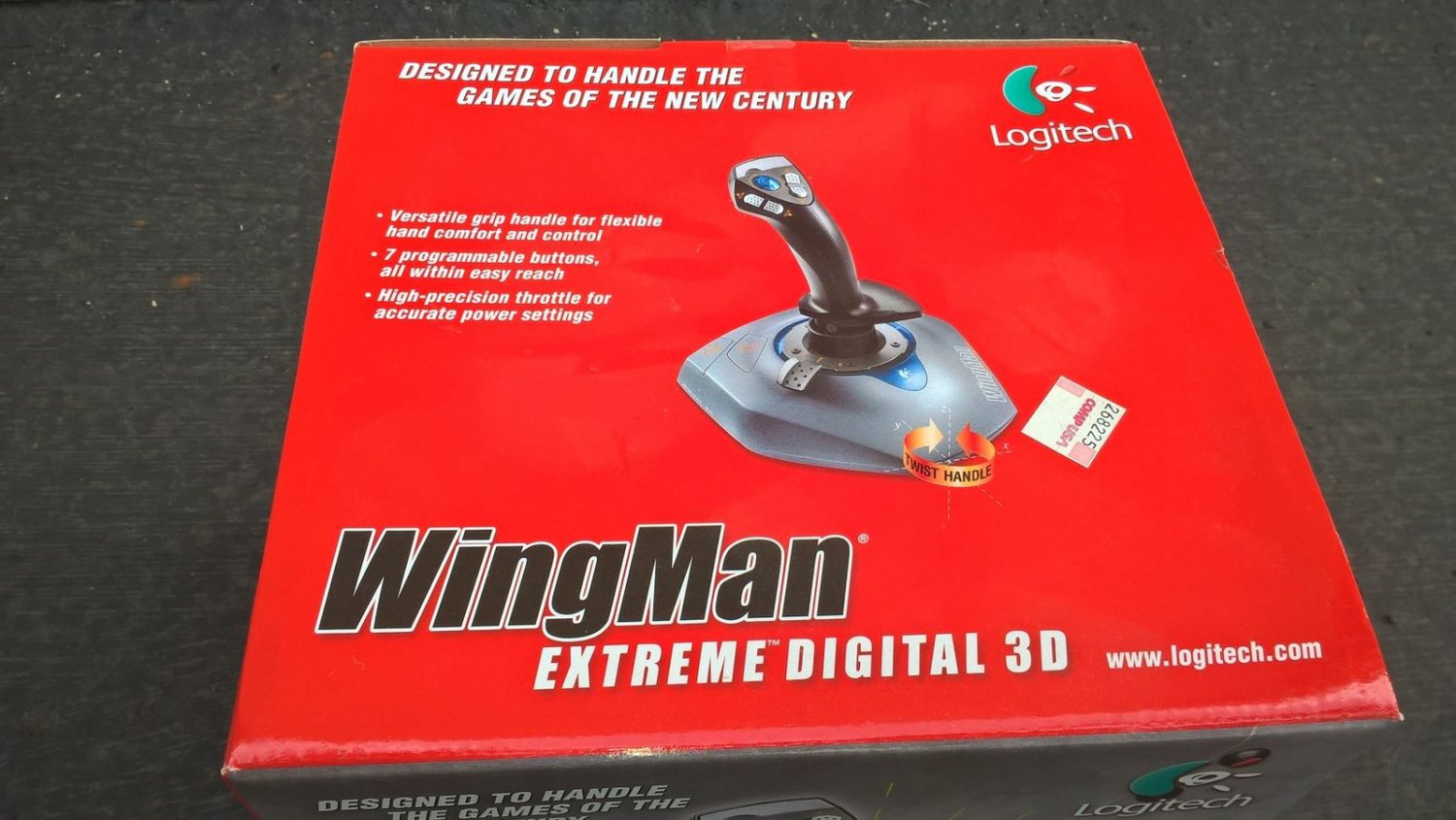 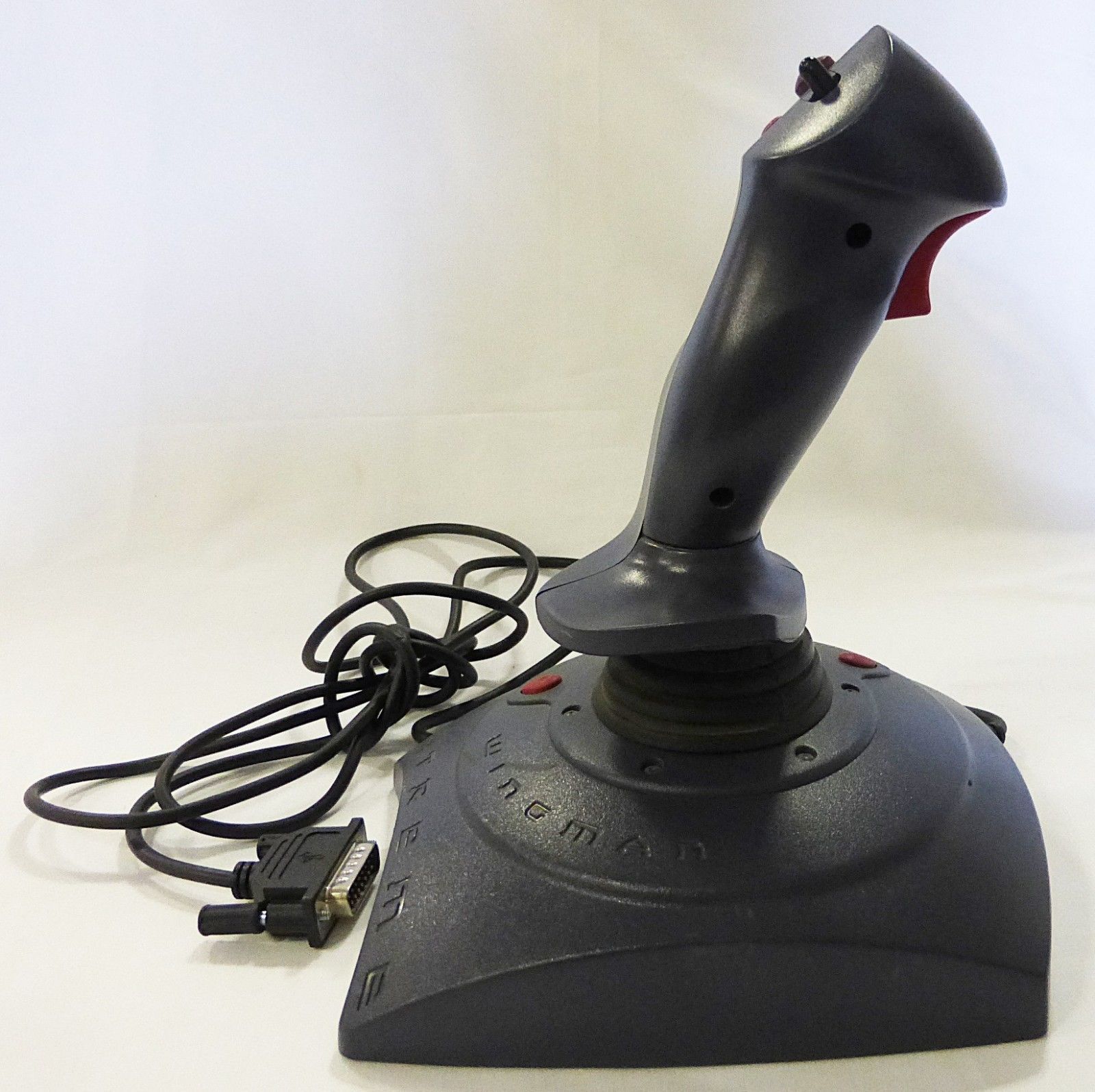  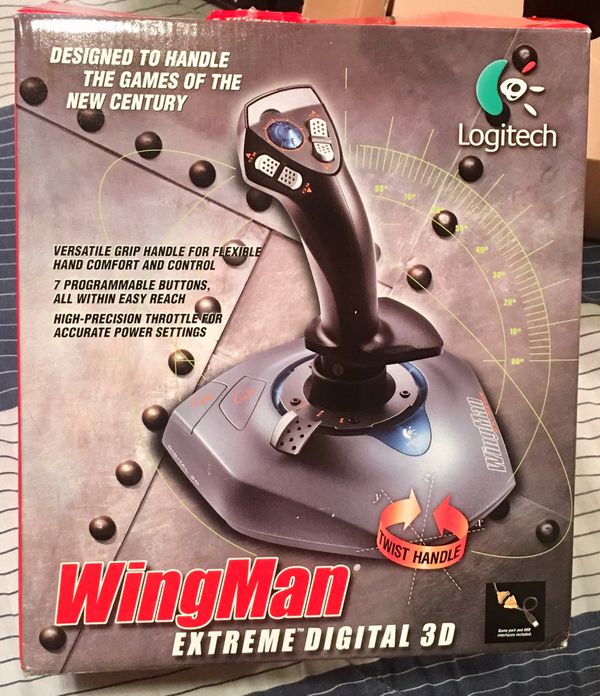 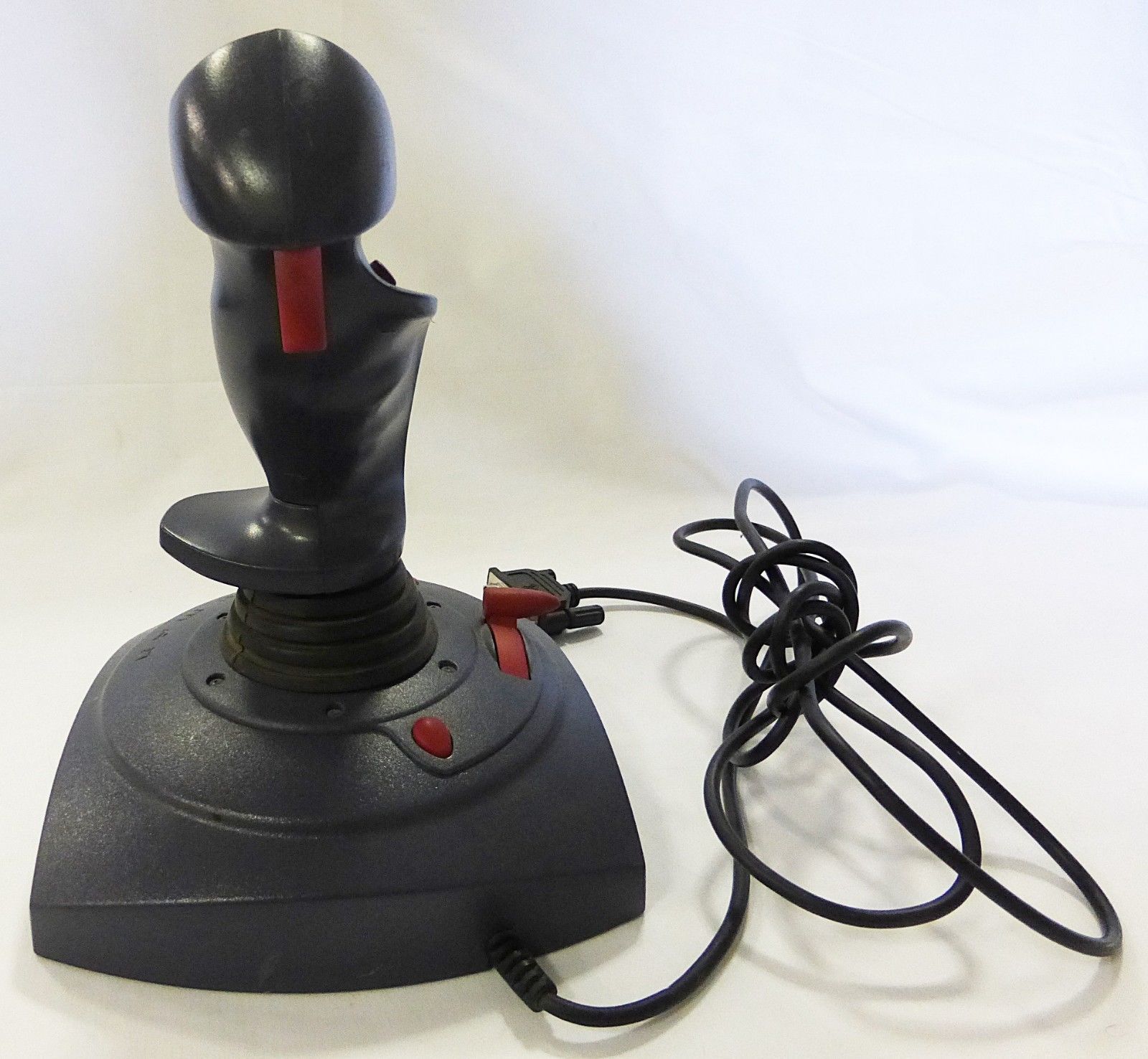 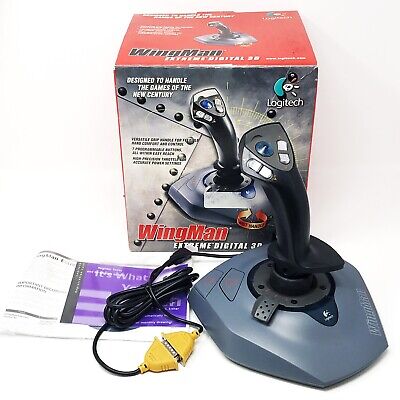 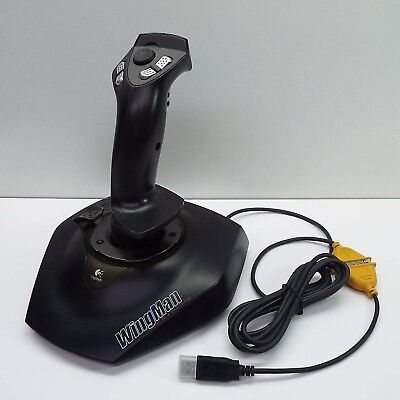
|
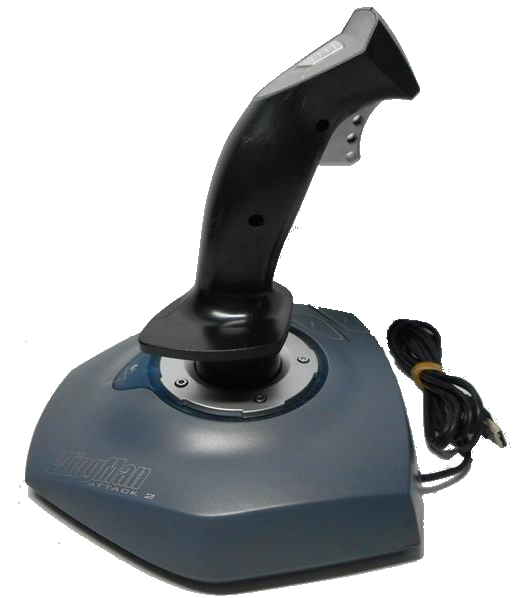 WingMan Attack 2 WingMan Attack 2
Launched: 2001
Interface: USB
Number of Axis: 2
Number of Buttons: 6
Prices: $11 (Nov '03)
The WingMan Attack 2 was released in the early 2000s. It is a 2-axis joystick with two base buttons and a slightly modified graphic on the top compared to the original WingMan Attack. The joystick is black, the base is gray, and the throttle is silver to make it look like metal. It connects to the PC via a USB 1.0 interface.
The WingMan Attack 2 joystick provides performance features such as a rapid-fire trigger, handle and base buttons, and a precision throttle.
The six buttons can be programmed.
More Images
 
|
WingMan Force 3D
Launched: 2001
Interface: USB
Number of Axis: 3
Number of Buttons: 6
The WingMan Force 3D was released in the early 2000s and is very similar to the WingMan Extreme Digital 3D. It has all the same buttons, but the 8-way hat is inset rather than raised, and the graphics are different. The major difference is that it has force feedback. It connects with USB 1.0 and requires and external DC power plug to power the force feedback.
More Images
|
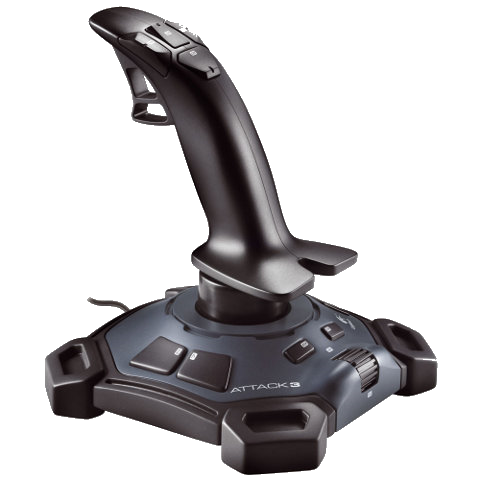 WingMan Attack 3 WingMan Attack 3
Launched: 2002
Interface: USB
Number of Axis: 3
Number of Buttons: 11
The WingMan Attack 3 was nothing like the earlier Attack 2. It has a whopping 11 programmable buttons, a rapid-fire trigger, and a throttle. It is suitable for both left- and right-handed individuals.
Software-wise it uses Logitech's Profiler software, which offers advanced button customization, multiple controller configurations and printable gaming profiles.
More Images
|
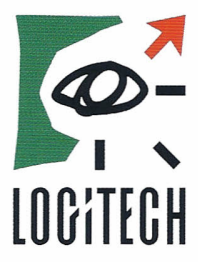 Logitech
Logitech

















